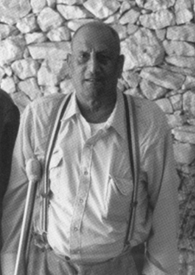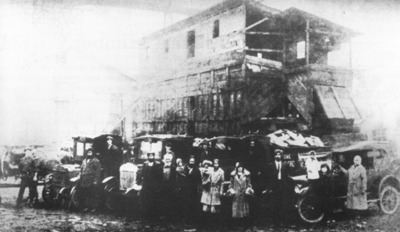





|

|
All of the women who remember those days agree that the situation was not like today when Indian women can be seen in
ethnic dress in public. This was unheard of in the old days. Some women even adopted western dress en route. " When we
stopped in Hong Kong I bought some dresses, " says Mrs. Pritam K. Johl. " Everybody said that we couldnít land unless we
dressed properly. The pioneers insisted that we dress like the other Canadian people. They would not let anyone dress
differently, we had to show that we could fit in and be just like the white people. "
In keeping with this philosophy of conforming to the Canadian ways, most young men got their hair cut and bought new clothes.
Almost all of them came wearing turbans and never cut their hair because of their strict religious upbringing. Devout Sikhs never
cut their hair, so this decision was very difficult for some men. But there was strong pressure from outside to conform: from

|
|
Mr.Mawa Singh Mangat
|
family, friends and the dominant society. For Mr. Mawa S. Mangat it was very traumatic: " My dad made me cut my hair. Right
after I got off the ship he took me to the Japanese barber at Fraser Mills. I cried all the way through it, I couldnít sleep for a
couple of nights. Iíll never forget that. " Mr. Kuldeep S. Bains had a similar experience: " My two brothers were working at
Sooke Lake in the sawmill. They came to see me the day after I landed in Victoria. First thing in the morning, Bunt said, ĎLetís
go to town.í We went to town to a Japanese barber. They made me sit down and get a haircut. He said, ĎI donít want you to
wear this turban around here.í He then took me to buy some new clothes, thicker clothes for winter. "
White barbers would not cut their hair of Asian people, so Sikhs had to go to Japanese or Chinese barbers. This practice
persisted well into the 1940s. " I went to the Canadian barber at one point, " Mr. Dedar Sihota remembers. " I sat and they kept
taking other people and ignoring me. I said I want a haircut. He said, " Sorry, we donít cut your hair. " They would not cut the
hair of any Chinese, Japanese or East Indian. This was in 1943. "
The Sikhs made these concessions in order to fit in with other Canadians. They would always stand out because of their skin
color, but at least they tried to fit in with the dominant culture. Most Sikhs felt that these were simply surface changes and that
they had not changed in any fundamental way. " Canadianization " was the price they had to pay for coming to this country, an
offering given to make life in Canada a little easier.
Now the newcomers were prepared to get on with their lives. All of them had a place to go since their sponsors, the original
pioneers, had gained a foothold here by establishing small communities around the temples and places of work. Many
immigrants went to live in their own homes or rented homes; some moved into company-owned bunkhouses.
The largest community was in Vancouver, centred around the Sikh Temple at 1866 West 2nd Avenue in Kitsilano. It had its
roots in the 1904-1908 time period when most of the first Sikh immigrants found employment in the many lumber mills located

|
|
Johl family lumber business
|
in the False Creek area. Some men lived in their own homes; others lived communally in rented homes. Brotherís Chanan,
Bawa and Nand Singh Johal, who came to Canada in 1905 and 1906, were among the first to establish themselves in this area.
After working in the lumber mills for many years, they started a lumber cartage business in 1918 at Cedar Cove Sawmill on
West 6th Avenue. Nand Singh Johlís son Karnail describes his familyís experiences: " My family bought our first house in 1911,
at 1785 West 6th Avenue. It was about half a block from the temple. They paid $275 at that time. Then they bought another
house across the street, it was 1768 West 2nd. Avenue, in 1914 They used to tell us they paid around $475 for that one.
Wages at that time when they first came out were about ten cents an hour. They bought the house on those wages, so that was
a lot of money at that time. "
|
cont...
[p.2]









|







